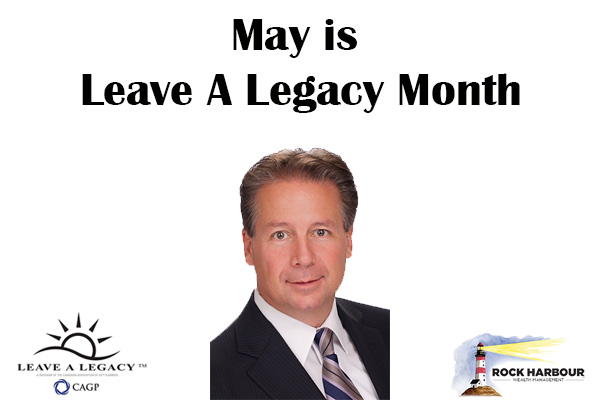As some of you may already be aware, May is “Leave a Legacy” month. I have been involved with the local roundtable of the Canadian Association of Gift Planners (CAGP) for many years now. The CAGP is the only organization in Canada that brings together charitable representatives with donor advisors in one professional association. Among our fundraising, legal and financial peers, we are looked to as the experts in strategic charitable gift planning.
This involvement coincides with my passion to support our community. Being involved with Windsor Goodfellows, Hospice, Cystic Fibrosis and others, allows me to give back to the community in a meaningful way. It also allows me to get my children involved which provides great teachable moments of supporting and giving to people in need.
The legacy and charitable gifting side of the estate planning process that we offer to our friends and clients is an opportunity to help people with their long term planning. Many people support one of more charities during their lifetime and have the intention of making a final donation when they pass away.
Charitable gifting can be done in so many ways. For example, the most popular way is to make a provision in your will. This allows a concise instruction to the estate trustee (executor) and lawyer in fulfilling your charitable gift to the charity or non-profit organization you choose. I have seen firsthand some amazing gifts that have been given in this manner, and it should be noted that these gifts, for the most part, came out with no previous notice to the charity receiving the gift.
You can also leave instructions as a named beneficiary on a life insurance contract. Many people have old policies that were originally purchased to ensure their lives during the years of raising their children, working or to protect their spouse upon premature death. People will ask me what to do with these policies now that they have passed this stage. This opens up the discussion of leaving a legacy or planned giving. It’s important to note that there can be some tax benefits to you and your estate. (Consult your financial advisor or tax professional for further guidance).
Lastly, leaving a legacy does not have to always be a financial gift. Many people leave the legacy footprint by being a volunteer or helping the elderly during their struggles at later stages in their lives. I was always told that “you have to give to get” and I feel very strongly that life is good when we help each other every day.
Please click on the Planned Giving tab for more ideas. It will also lead you to the CAGP website.
Thanks for reading. Let us know if we can help.

